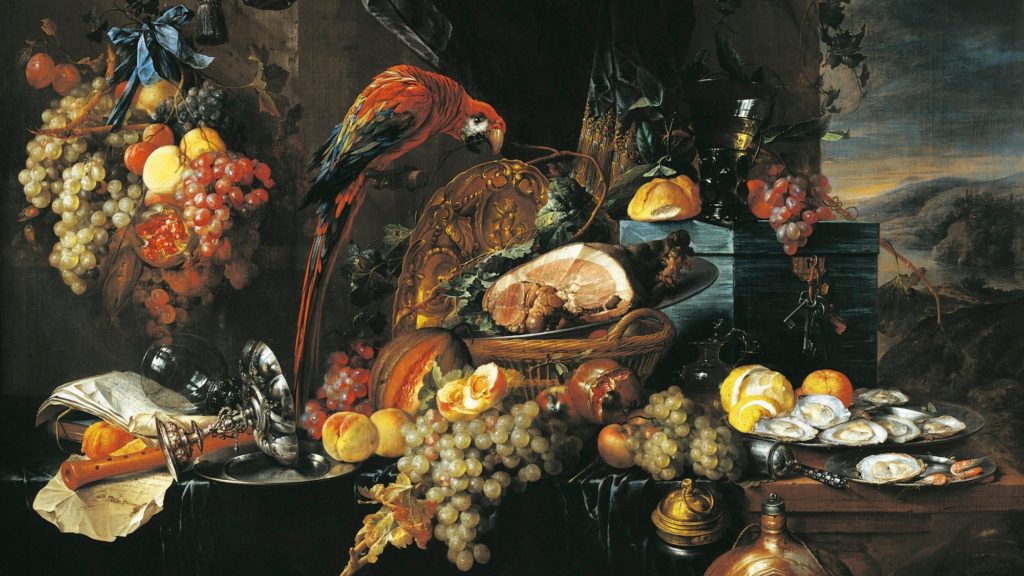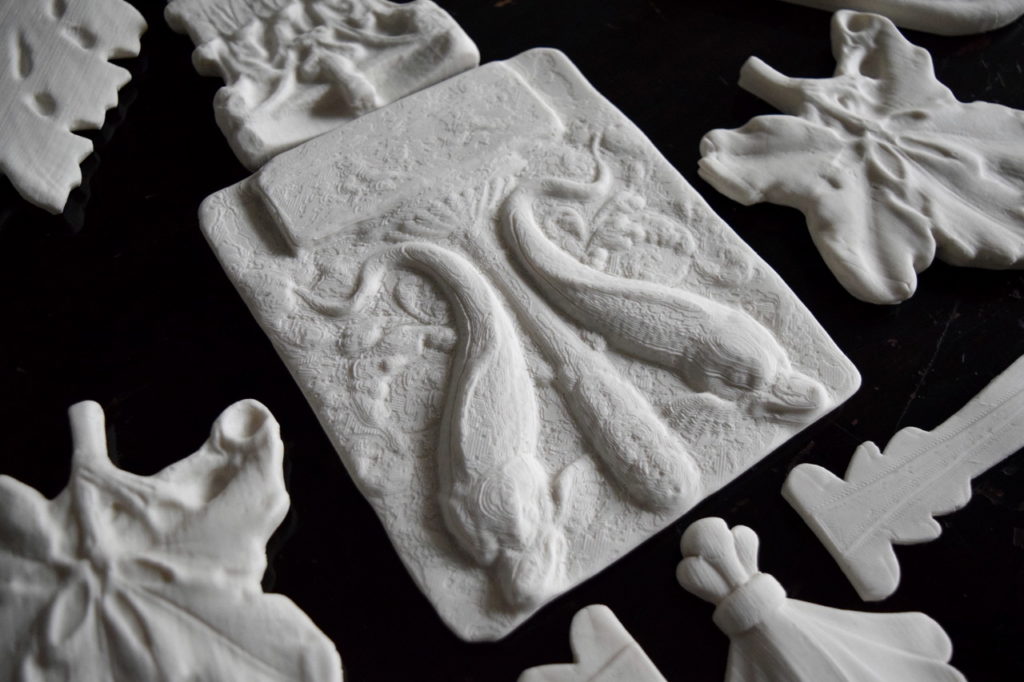A Bitesize History of Food Art
From the lavishing Roman feasts to Instagram photos of today, depictions of food have always captivated the human imagination. The fascination led to the creation of food art, a special genre of art that features food, drinks, and other edibles as the main theme or the medium for the artwork. Food art can come in a variety of forms; it can be a sculpture, a painting, a photograph, or a digital art piece.
The history of food art can be traced back to the Roman period. Food (especially wheat and grapes), was frequently featured on Roman frescoes, particularly those that depicted Bacchus, god of wine, and the images dedicated to Ceres, goddess of grain. Even artists specialized in non-religious, secular paintings, frequently depicted food, (usually scattered on the floor after banquets), simultaneously emphasizing wealth and their own painting skills. It is fair to say that Roman painters paved the way for food artists in Western art history.

Check our upcoming events selected for you:
Food Art in the Middle Ages
In the middle ages, food was often incorporated into scenes from everyday life. The artists of the time would use images of food to illustrate differences in meals and the eating habits of the wealthy and the poor. Needless to say, food art found its place in religious medieval imagery too, most famously in the works depicting The Last Supper.
Although there have been many portrayals of this Biblical scene, the work of Leonardo da Vinci is by far the most famous one. The Italian artist skillfully incorporated food into the story, with bread and wine symbolizing the body and blood of Christ, alongside fruit and popular fish of the time.
Food art in the middle ages also served for making humorous statements. In the 16th century, painter Giuseppe Arcimboldo created portraits of Emperors, whose facial features were made completely out of fruits and vegetables, for allegorical and humorous effect. His celebrated series entitled The Four Seasons is composed of 4 masterpieces, each depicting a different season of the year. Every piece is made of vegetables, grains, and fruits typical of the painted season. The artworks have a distorted, puzzle-like quality, and count on the viewers’ imagination to piece the portrait together.

Still Life Imagery
With still life emerging as a distinctive genre in the late 16th century, the depictions of nourishments reached their peak. The Dutch and Flemish masters were particularly known for their lavishing still-life paintings, executed in the style of the Baroque. These images were meant to show off painters’ technical skills, by depicting detailed, highly realistic images of food.
But they were also meant to depict wealth, as artists painted enormous plates of expensive food, such as lobsters, oysters, and exotic fruit like grapes and citrus. In contrast to his contemporaries, famous Dutch painter Johannes Vermeer used rich colours to portray common food like milk and bread, with emphasis on the light and texture that made his works iconic.
By the 19th century, the popularity of food art had plummeted, but occasionally renowned artists still masterfully portrayed edible objects. French artist Paul Cezanne, for example, painted a whole series of fruit paintings in the late 19th century. The artworks represented an important milestone in his career, as he turned away from Impressionist representational painting, and embraced abstraction and distorted Cubist perspective.
Pop Art and Feminist Art
The Pop Art movement used food art to epitomize industrial and consumerist culture. Famous Campbell’s Soup Cans series by Andy Warhol appropriated consumerists and mass media iconography. Since Campbell’s Soup Cans are mass-produced items, the artist deliberately mimicked the mass-printed advertisement technique. By painting 32 almost identical depictions of cans, Warhol questioned the idea that art should be unique and opted for making repetitive pieces. His tendency to connect food art and consumerist society has inspired a generation of artists to come.
In the late 1960s and early 1970s, feminist artists like Miriam Schapiro and Judy Chicago explored the notion of food in regard to the constraints it placed on women. Their projects criticised society’s double standards, but also explored the development of female rights and freedoms that are yet to be won. At the same time, artists have increasingly started to use food as a material for making their pieces. In her monumental sculpture called A Subtlety, or the Marvelous Sugar Baby, artist Kara Walker, explores the relationship between white slave owners and black slaves working at the sugar plantations.

Sink your Teeth Into the Delicious World of Food Art
Naturally, the elaborate history of food art can not be presented in a single blog post. We have given you just a little taste of how versatile and complex food art can be. If you want to know more about food art and particularly food as a medium for making art, join our Food & Art Through the Ages online event. Hosted by food historian Tasha Marks, this lecture will focus on the art of deserts dating back to the 16th-century sugar sculptures to today’s 3D-printed sweets. Highlighting the connection between deserts and art, the event is a real treat for those with a sweet tooth.

Leave a Reply